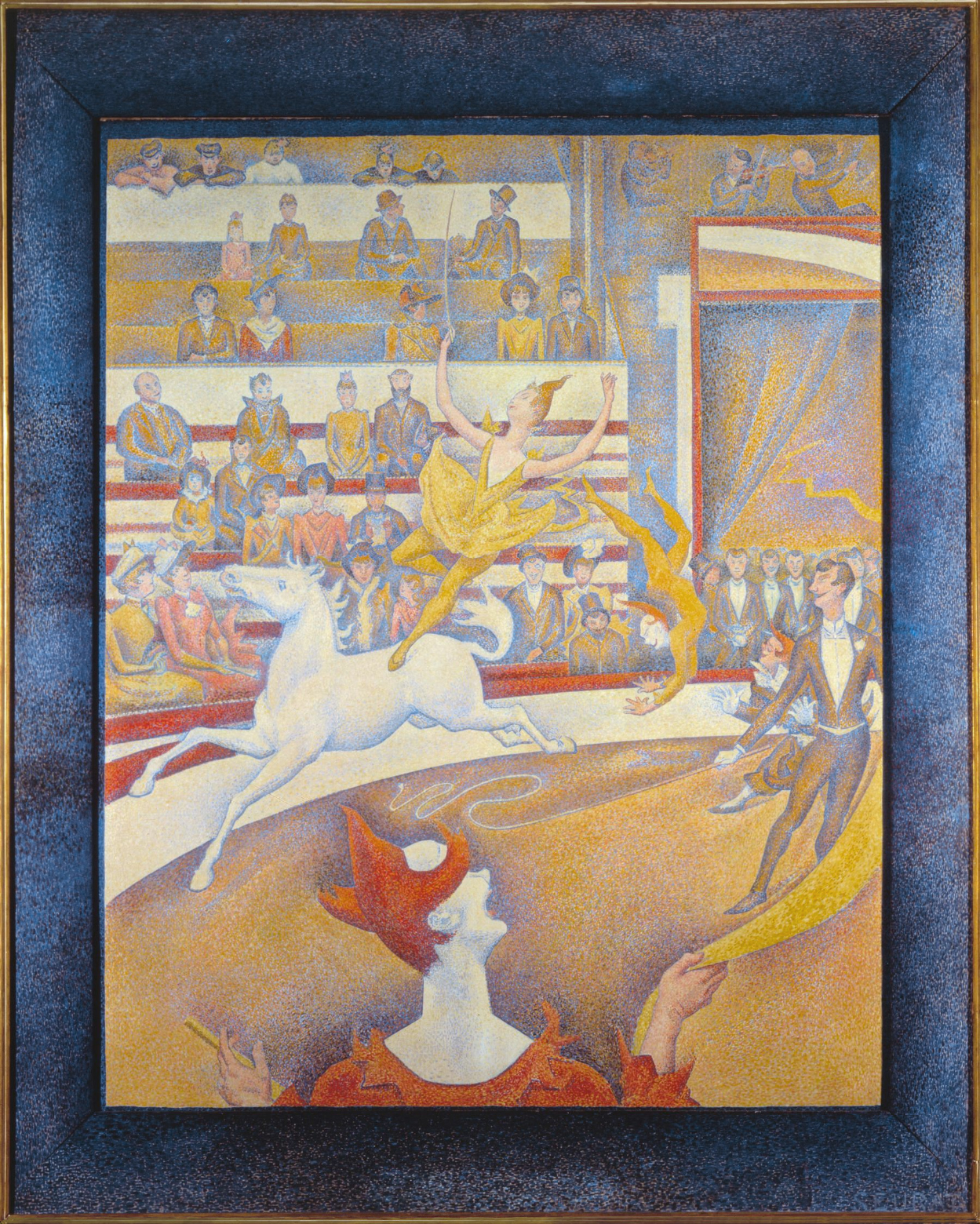Today is the birthday (in 1859) of Georges Seurat, a French Post-Impressionist Artist who devised the painting techniques known as chromolumarism and pointillism. His large scale work, A Sunday Afternoon on the Island of La Grande Jatte (above), is one of the iconic works of late 19th Century painting. If you look at it carefully you can see it is made up of tiny brush strokes of different colors that appear to the viewer to create a third color.
Seurat was very much influenced by scientists of the time who were researching color, optical effects and perception. One of the scientists, Michel Eugène Chevreul, discovered that two colors, juxtaposed or slightly overlapping would have the effect of another color when viewed from a distance. This phenomenon became the basis of the pointillist technique of the neoimpressionist painters. Chevreul also realized that the impression one sees after looking at a particular color is the complementary color. If one stares at a red object, one may see a cyan echo of the original object due to retinal persistence.
Seurat believed that a painter could use colors, especially complementary colors, to create harmony and emotion in the same way a composer uses counterpoint and variation to create harmony in music.
This painting, The Circus, was Seurat’s final work and demonstrates to a degree his theories of color. Note that he carried the pointillism even to the frame.

Seurat died in 1891 at the age of 31. He is buried in Paris. at the Cimetière du Père-Lachaise.
I really like his work, particularly his use of color. I’m amazed at the amount of work that must have gone into each of his paintings. The ‘Sunday on the Grand Jatte is huge – 10 feet wide! It’s at the Art Institute of Chicago. Go and see it when you are next there. If you can’t get to Chicago, there’s a much larger version on Wikimedia Commons HERE.

I love this painting and am always fascinated by the technique. Thanks for the post.
Thanks for posting.